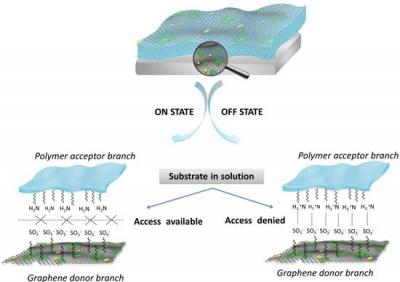Researchers from from Sweden's Linköping University managed to fabricate an on/off switchable zipper-like graphene interface in order to control interaction between biomolecules and electrode materials. Using electrochemical techniques, the researchers hope that this can lead the way towards development of an auto-switchable graphene bio-interface based bio-devices.

The researchers developed a "zipper" that is made from a graphene donor and a polymeric receptor, which are assembled together based in a stoichiometric interaction. At about 20 degrees Celsius, hydrogen bonding creates a coalescence of the graphene interface, thereby causing considerable shrinkage in the donor-to-acceptor interface. Thus access of an associated enzyme to its substrate is largely restricted, resulting in a decrease in the diffusion of reactants and the consequent activity of the system.
In contrast, at 40 degrees, the donor-receptor interaction was subverted. As a result, the bio-substrate could freely access the enzyme facilitating bio-electrocatalysis. This provides the first example of responsive bioelectronics being achieved on a 2D graphene interface by controlling the external temperature as an on/off-switchable model.